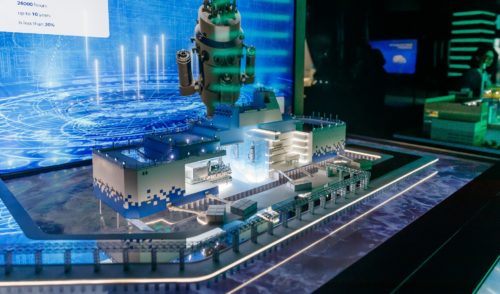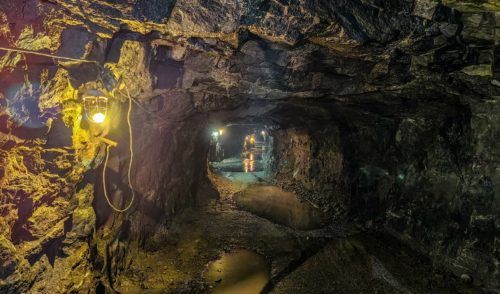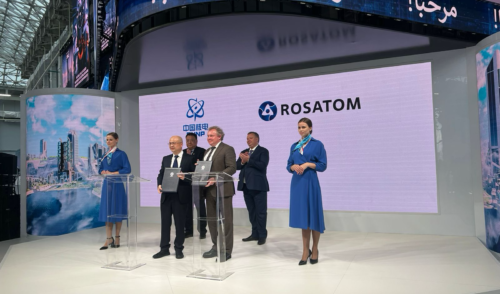
“Hat” and “skirt” for the reactor
back to contentsTraditionally, as a new season comes we provide a review of recent events at the Russian nuclear build sites. The focus is on Novovoronezh, Rostov and Sosnovy Bor.
At Novovoronezh NPP Phase II specialists of ROSATOM’s engineering company Atomenergoproekt have started installing the inner containment of the reactor building. The containment dome, which consists of the lower and upper sections, is installed using a DEMAG crane, which is one of the most potent in Russia. Its lifting capacity is 1,250 tons.
The operation was carried out in two stages. First, the lower section of the dome was installed on its designated place. The builders named it the “skirt”. The next stage was the installation of the upper section, or the “hat” in the industry buzzword. A total weight of the dome structures is over 400 tons; its base inner diameter is 44 meters.
Exquisite workmanship.
The double-wall containment building of the reactor, which includes the dome, prevents radioactive releases into the environment and serves as physical protection against external natural and man-induced impacts such as an earthquake, tornado, aircraft crash and other.
Caps
The National Research Center Kurchatov Institute and the Juelich Research Center (Germany) will join efforts to develop a research reactor. The National Research Center Kurchatov Institute and the Juelich Research Center (Germany) will join efforts to develop a research reactor. The National Research Center Kurchatov Institute and the Juelich Research Center (Germany) will join.
Before installing the dome on its designated place, the builders carried out on-site assembling of its components (rebar modules). This ensured high quality of installation works. The metal structures of the dome, as well as process systems, in particular NPP safety system components, were assembled on the ground.
CEO of Atomenergoproekt Marat Mustafin says the dome installation is one of the most complicated operations in the NPP building process. He notes: “It is exquisite workmanship. A 200-ton structure plus has to be put on the designated place with an accuracy of up to 10 millimeters. Only high-class professionals do the job.” Installation of the Unit 2 reactor dome is a marking event because the power unit acquires finished appearance thereafter.
Earlier, at the second power unit of Novovoronezh NPP Phase II, they have started installing the reactor coolant pumps (RCPs) in the second reactor building. RCPs are part of the critical equipment in the reactor building. They are intended for ensuring circulation of the primary coolant. The device pumps more than 25,000 cubic meters of water per hour. Also, MCPs support the reactor core cooling in all operational modes. The reactor system incorporates four RCPs.
On the homestretch.
Unit 3 of Rostov NPP is also planned to start up before the end of this year. Now, it is getting ready for the key stage of the hot trials of the reactor. This is one of the essential operations at the stage of the first criticality preparations; it involves tests of all process systems.
Also, full-scale start-up and adjustment operations are under way in the turbine hall, which houses the turbine set of Unit 3.
“The specialists checked the turbine rotor runout and carried out an ultrasonic inspection of all rotor welds,” Victor Aronov, the Head of Process Control Department at the united engineering company NIAEP-ASE, specified. “No flaws in the equipment were detected; so this confirms that the turbine is ready to operate at working parameters,” he added. NIAEP-ASE is the principal construction contractor of the plant. It is one of the leaders of the world nuclear engineering business and holds 31% of the global nuclear build market.




